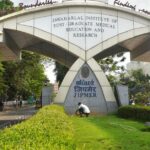Introduction
The raw data that we obtain from the client or different data sources are complex and cannot be used initially. Many activities are carried out on this data to make it simple and clean enough to be put to use. Data cleaning is done to make our work easy by eliminating unsuitable data. Scroll down to further read up on the concept of what is data wrangling.
What Is Data Wrangling?
Data Wrangling meaning, a process that involves cleaning, restructuring, reformatting or reshaping raw data to make it more valuable and appropriate to answer an analytical question in less time. It is the term frequently used to describe the initial phase of the data analytics process. A few years back, a major survey of data sciences showed that the average data scientist spends about 80 per cent of their time doing data wrangling and leaving only 20 per cent of their time exploring and modelling.
Click here – Is Power BI in demand?
Some data-wrangling examples include:
- Integrating multiple data sources into a single database for analysis.
- Recognizing gaps in data (for example, empty cells in a spreadsheet).
- Removing data that is either unnecessary or immaterial to the project you are working on.
Data wrangling tools and techniques
The data wrangling process can be manual or computerized. In projects where databases are too large, computerized data cleaning becomes a must. Data analysts invest around 80 per cent of their time doing data wrangling, and only the rest 20 per cent is used to perform the actual analysis.
A few of the data wrangling tools are as follows;
- Excel Power Query / Spreadsheets: It is the most commonly used tool for data mixing
- OpenRefine: It is a powerful tool used to work with messy data.
- Tabula: A tool for extracting data locked in .pdf files. With the help of this tool, you can pull out the data into a simpler interface such as a Microsoft Excel spreadsheet.
- DataWrangler: Any Mac or Windows user with an internet connection can download, install and start using this immediately.
- CSVKit: It is a room of command-line tools for transforming to and working with CSV. It is used for the conversion of data.
Data science course
Data wrangling in data science can be described as a mixture of mathematics, scientific methods, tools, algorithms, and machine learning techniques, which helps in mining knowledge from structured and unstructured data to make business decisions.
- Eligibility: The applicant must have a BCA/ B.Sc Statistics/ B.Sc Mathematics/ B.Sc Computer Science/ B.Sc IT./ BE or BT or any other identical degree from a recognized institution. He/ She must have achieved 50 per cent in the qualifying exam.
- Subjects: The main subjects in the data science syllabus include Statistics, Coding, Business Intelligence, Data Structures, Mathematics, Machine Learning, Algorithms.
- Jigsaw Academy offers online courses for data science that can help you earn a certificate.
Below are a few of the popular data science courses available:
- CS109 Data Science
- Python for Data Science and Machine Learning Bootcamp
- Machine Learning A-Z: Hands-On Python & R In Data Science
- Post Graduate Program In Data Science
- Data Science Specialisation
- Introduction to Data Science
Data wrangling steps
Each project requires a special approach to make sure its final database is dependable and attainable. Thus, several processes typically inform the approach. The following are referred to as data wrangling steps:
- Data Discovery: It refers to the process of getting yourself familiar with data to visualize its use. During this process, you may recognize trends or patterns in the data and apparent issues like misplaced or partial data that need to be conveyed.
- Data Structuring: Raw data is not usable at its initial stage as it is either incomplete or not properly arranged to be put to use. It is the process of transforming raw data to be more readily leveraged.
- Data Cleaning: In this process, irrelevant and incomplete data is removed or modified. In this, the inherent data errors are removed to smoothen the analysis. The main objective of this process is to eliminate all (or most of) the errors that could affect your final analysis.
- Data Enriching: After performing the above steps, you must know whether you have all the data necessary for the project. It is defined as merging third-party data from an external reliable source with an existing dataset of first-party customer data.
- Data Validating: It refers to the process of verifying that the data is both compatible and of high quality.
- Data Publishing: Prepare the data set for use downstream, including use for users or software. Be sure to document any steps and logic during wrangling.
Read Also: Why is CCNA Certification Very Important?
Conclusion
Data Wrangling plays an important role in processing data before applying any algorithms to it, ensuring that the data is readily available and is appropriate for convenient consumption. It helps discover material information and thus supports data analysis so that less time is consumed in bringing out the most reliable result. Online data science courses from JIgsaw Academy can help you further your career.





